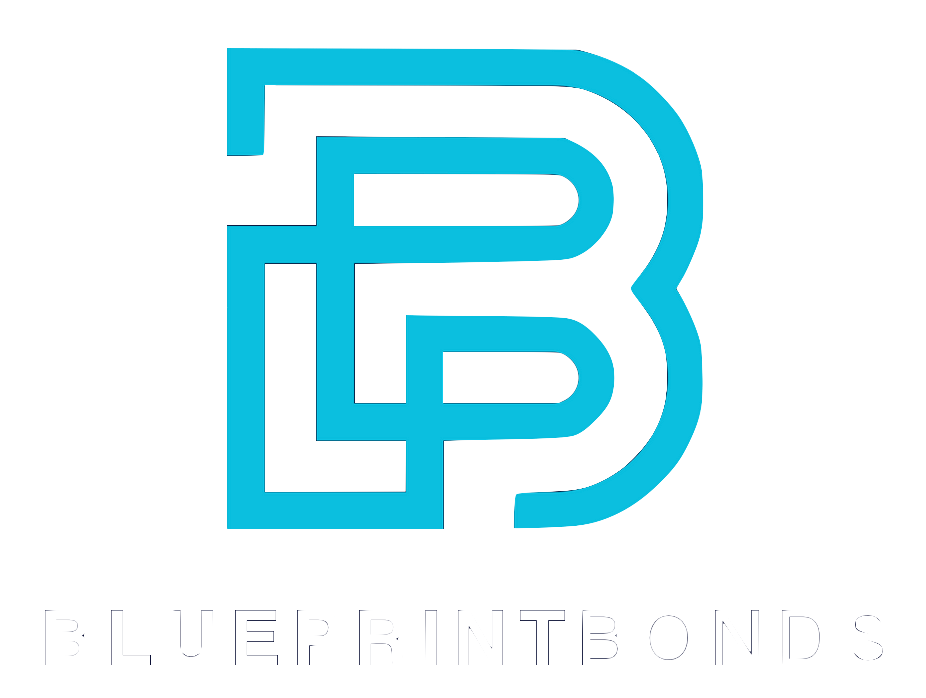The Arizona Wage and Welfare Bond is a critical component of labor law compliance in the state. It serves as a financial guarantee that employers will meet their wage obligations and adhere to labor regulations. This article will delve into the specifics of the Arizona Wage and Welfare Bond, its purpose, requirements, and the implications for employers and employees alike.
Understanding the Arizona Wage and Welfare Bond
The Arizona Wage and Welfare Bond is designed to protect workers by ensuring that employers fulfill their wage and benefit obligations. This bond is particularly relevant for contractors and subcontractors in the construction industry, where wage theft can be a significant issue. Wage theft not only affects the financial stability of workers but can also lead to broader economic repercussions, as it undermines fair competition among businesses and erodes trust in the labor market.
What is a Wage and Welfare Bond?
A Wage and Welfare Bond is a type of surety bond that guarantees payment of wages and benefits to employees. In Arizona, this bond is often required for businesses that have contracts with public entities, ensuring that workers receive the compensation they are entitled to under the law. The bond serves as a financial guarantee that employers will meet their obligations, thus fostering a more secure working environment.
The bond acts as a safety net for employees, providing them with a means of recourse if their employer fails to pay wages or benefits. In the event of a claim, the surety company that issued the bond will step in to cover the owed amounts, protecting workers from financial loss. This mechanism not only aids individual workers but also promotes a culture of accountability among employers, encouraging them to adhere to labor laws and treat their employees with fairness and respect.
Who Needs to Obtain This Bond?
Generally, contractors and subcontractors working on public projects in Arizona are required to obtain a Wage and Welfare Bond. This requirement ensures that all workers involved in these projects are compensated fairly and in accordance with state and federal labor laws. The bond is particularly crucial in the construction sector, where projects often involve multiple layers of subcontracting, making it essential to safeguard the rights of all workers involved.
Additionally, businesses in other industries may also choose to obtain this bond voluntarily to demonstrate their commitment to fair labor practices and to enhance their reputation among clients and employees. By securing a Wage and Welfare Bond, companies not only protect their workforce but also position themselves as responsible employers in a competitive marketplace. This proactive approach can lead to increased employee morale, reduced turnover, and a stronger overall company image, making it a worthwhile investment for businesses aiming to attract top talent and maintain a loyal workforce.

Requirements for Obtaining a Wage and Welfare Bond
Obtaining an Arizona Wage and Welfare Bond involves several steps and requirements. Understanding these can help streamline the process and ensure compliance with state regulations.
Bond Amount
The bond amount required can vary based on the size of the project and the number of employees involved. Typically, the bond amount is set to cover the wages and benefits of workers for a specified period, ensuring that funds are available in case of a claim.
It is essential for employers to assess their workforce and project scope accurately to determine the appropriate bond amount. Failing to secure a sufficient bond can lead to penalties and legal complications. Additionally, employers should consider potential fluctuations in workforce size or project duration, as these factors can impact the required bond amount. Consulting with a financial advisor or a surety bond expert can provide valuable insights into determining the right coverage.
Application Process
The application process for obtaining a Wage and Welfare Bond usually involves submitting a formal application to a surety company. This application will require detailed information about the business, including financial statements, credit history, and project details.
Surety companies will evaluate the application based on the applicant’s financial stability and history of compliance with labor laws. A strong application can lead to more favorable bond terms and lower premiums. It is also beneficial for applicants to prepare for a possible interview or additional inquiries from the surety company, as this can further clarify their business operations and commitment to adhering to labor regulations. Providing references or testimonials from previous projects can also bolster the application.
Premium Costs
The cost of obtaining a Wage and Welfare Bond, known as the premium, is typically a percentage of the total bond amount. This percentage can vary based on the applicant's creditworthiness and the surety company's underwriting criteria.
Employers with a strong financial history and a good reputation for compliance may qualify for lower premiums, while those with a history of violations may face higher costs. It is advisable to shop around and compare rates from different surety companies to find the best deal. Moreover, understanding the factors that influence premium rates can empower employers to take proactive steps to improve their creditworthiness, such as paying off outstanding debts or resolving any compliance issues. Engaging with a broker who specializes in surety bonds can also provide access to a wider range of options and potentially better rates, ensuring that employers make informed decisions about their bonding needs.
The Importance of Compliance
Compliance with wage and welfare bond requirements is crucial for employers operating in Arizona. Failing to secure the necessary bond can lead to severe consequences, including legal action and financial penalties.
Legal Implications
Employers who do not obtain a Wage and Welfare Bond as required may face legal action from employees seeking unpaid wages or benefits. This can result in costly lawsuits and damage to the company's reputation.
Moreover, public entities may refuse to award contracts to businesses that do not comply with bonding requirements, limiting opportunities for growth and expansion.
In addition to the immediate legal repercussions, non-compliance can also lead to long-term ramifications. Companies may find themselves blacklisted from future contracts or partnerships, as other businesses and government agencies often conduct thorough background checks. This not only affects current operations but can also stifle future business development and collaborations, which are essential for sustained growth in a competitive market.
Employee Protection
The primary purpose of the Wage and Welfare Bond is to protect employees. By ensuring that employers meet their wage obligations, the bond helps create a fair and equitable work environment.
When workers know that their wages and benefits are secured by a bond, they can focus on their jobs without the fear of wage theft or exploitation. This contributes to higher morale and productivity in the workplace.
Furthermore, a strong commitment to compliance fosters a culture of trust and transparency within the organization. When employees feel valued and secure in their financial well-being, they are more likely to engage positively with their work and contribute to a collaborative atmosphere. This, in turn, can lead to lower turnover rates, reducing the costs associated with hiring and training new staff, and ultimately enhancing the overall performance of the company.
Claiming Against a Wage and Welfare Bond
In the unfortunate event that an employer fails to pay wages or benefits, employees have the right to file a claim against the Wage and Welfare Bond. Understanding the claims process is essential for workers seeking compensation. This bond serves as a financial safety net, ensuring that employees can recover unpaid wages and benefits even when an employer defaults on their obligations. It is crucial for workers to be aware of their rights and the resources available to them in such situations.
Steps to File a Claim
The process for filing a claim against a Wage and Welfare Bond typically involves several steps. First, the employee must gather documentation proving that wages or benefits are owed. This may include pay stubs, employment contracts, and any correspondence with the employer regarding unpaid wages. It is also beneficial to keep a detailed record of hours worked, as discrepancies in hours can often lead to wage disputes. Having a comprehensive file can strengthen the claim and provide clarity during the review process.
Once the necessary documentation is collected, the employee should submit a formal claim to the surety company that issued the bond. This claim will be reviewed, and if approved, the surety will disburse the owed funds to the employee. Employees should ensure that their claim is as detailed as possible, including a clear explanation of the circumstances surrounding the unpaid wages or benefits. Additionally, it may be advantageous to follow up with the surety company after submission to confirm receipt and inquire about the timeline for processing the claim.
Time Limits for Claims
It is important for employees to be aware of any time limits associated with filing a claim against a Wage and Welfare Bond. In Arizona, there may be specific deadlines that must be met to ensure that claims are processed in a timely manner. These time limits can vary based on the type of claim and the specific regulations governing the bond, making it essential for employees to familiarize themselves with the relevant laws.
Employees should act quickly and consult with legal professionals if they are unsure about the claims process or deadlines. Prompt action can significantly increase the chances of a successful claim. In addition, seeking legal advice can help employees navigate any complexities that may arise, such as disputes over the amount owed or issues related to the employer's financial status. Understanding the nuances of the claims process can empower employees to advocate for their rights effectively, ensuring they receive the compensation they are entitled to without unnecessary delays.

Best Practices for Employers
For employers, maintaining compliance with wage and welfare bond requirements is essential not only for legal reasons but also for fostering a positive workplace culture. Here are some best practices to consider.
Regular Audits and Record Keeping
Employers should conduct regular audits of their payroll and benefit practices to ensure compliance with labor laws. Keeping accurate records of employee hours worked, wages paid, and benefits provided can help prevent disputes and claims.
Additionally, maintaining clear communication with employees regarding their wages and benefits can foster trust and transparency, reducing the likelihood of misunderstandings or claims against the bond. Regularly scheduled meetings or updates can serve as a platform for employees to voice concerns or ask questions, further enhancing the employer-employee relationship.
Training and Education
Investing in training and education for management and HR personnel about labor laws and bonding requirements is crucial. Ensuring that all staff are aware of their responsibilities can help prevent violations and protect the business from potential claims.
Employers should also consider providing resources for employees to understand their rights regarding wages and benefits. Empowering workers with knowledge can lead to a more informed and engaged workforce. Workshops, informational handouts, and online resources can be effective tools in this educational endeavor, allowing employees to access information at their convenience and reinforcing their understanding of workplace policies.
Implementing Feedback Mechanisms
Another best practice is to implement feedback mechanisms that encourage employees to share their experiences and concerns related to wages and benefits. This could take the form of anonymous surveys or suggestion boxes, which can provide valuable insights into potential areas for improvement. By actively seeking feedback, employers can identify issues before they escalate into larger problems, thereby maintaining a harmonious work environment.
Moreover, addressing feedback promptly not only demonstrates that the employer values employee input but also reinforces a culture of openness and accountability. When employees feel heard and respected, they are more likely to be engaged and committed to their roles, which ultimately benefits the organization as a whole.
Conclusion
The Arizona Wage and Welfare Bond plays a vital role in protecting the rights of workers and ensuring that employers fulfill their wage obligations. Understanding the requirements, processes, and implications of this bond is essential for both employers and employees.
By adhering to compliance standards and fostering a transparent workplace, employers can not only avoid legal pitfalls but also contribute to a positive work environment. For employees, knowing their rights and the protections available through the Wage and Welfare Bond can provide peace of mind and security in their employment.
As the labor landscape continues to evolve, staying informed about wage and welfare bonds and related regulations will be crucial for all parties involved. Whether you are an employer or an employee, understanding these aspects can lead to a more equitable and fair workplace.
Article By: Ryan Spalding
Licensed Insurance Agent & Bond Specialist
Contact Us

